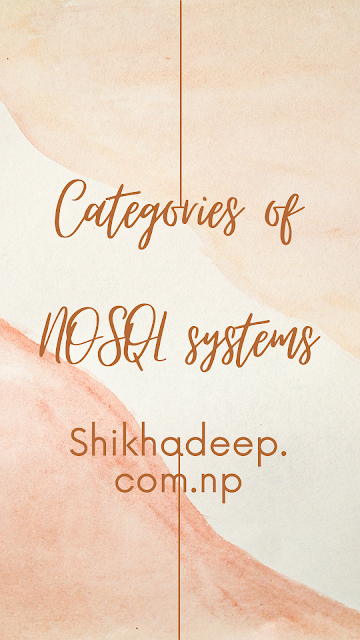What are the main categories of NOSQL systems? List a few of the NOSQL systems.
Types of NoSQL Databases
Several different varieties of NoSQL databases have been created to support specific needs and use cases. These fall into four main categories of NoSQL systems:
Document Databases
- Document databases, like JSON (JavaScript Object Notation) objects, store data in documents. Each document has a set of field and value pairs. The values might be of many sorts, such as texts, integers, Booleans, arrays, or objects, and their structures are usually aligned with the objects that developers interact with within code.
- Document databases are useful for a broad number of use cases and may be utilized as a general-purpose database due to their variety of field value types and strong query languages. They can expand out horizontally to accommodate enormous data volumes.
Key-Value Databases
- Key-value databases are a simpler form of database that has keys and values for each item. Learning how to query for a certain key-value pair is usually straightforward because a value can only be accessed by referencing its key.
- Key-value databases are ideal for situations in which you need to store a significant quantity of data but don't need to access it using complicated queries. Caching and saving user preferences are two common use cases. Popular key-value databases include Redis and DynamoDB.
Wide-Column stores
- Wide-column NoSQL databases store data in tables with rows and columns similar to RDBMS, but the names and formats of columns can vary from row to row across the table. Wide-column databases group columns of related data together. A query can retrieve related data in a single operation because only the columns associated with the query are retrieved. In an RDBMS, the data would be in different rows stored in different places on the disk, requiring multiple disk operations for retrieval.
Graph Databases
- Data is stored in nodes and edges in graph databases. Edges hold information about the relationships between nodes, whereas nodes store information about people, locations, and objects. A graph database uses graph structures to store, map, and query relationships. They provide index-free adjacency so that adjacent elements are linked together without using an index.



Comments
Post a Comment